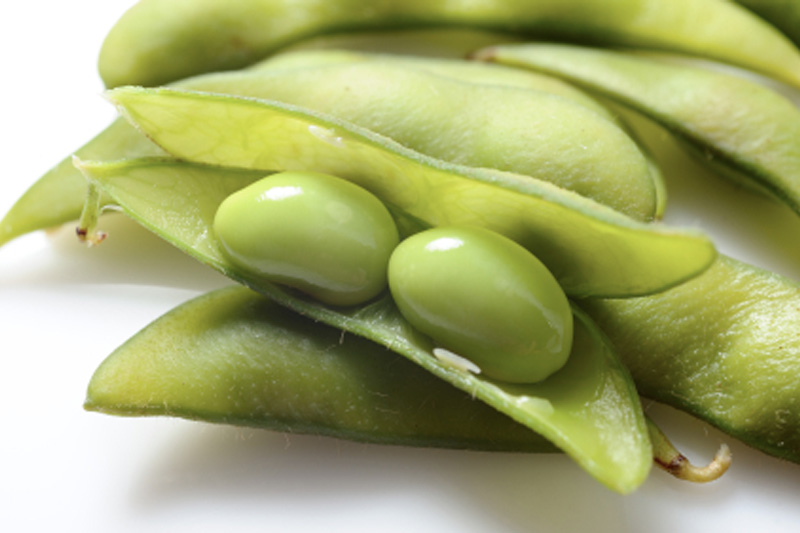Investing.com - U.S. grain futures were higher on Thursday, with corn, soybean and wheat prices bouncing off multi-month lows as investors returned to the market to seek cheap valuations.
Gains were limited as weather forecasting models continued to point to near-perfect temperatures across most parts of the U.S. Midwest during the next few days, easing concerns over potential crop damage.
On the Chicago Mercantile Exchange, soybeans futures for September delivery traded at USD12.1238 a bushel, up 1.1%. The September contract settled up 0.45% at USD11.9900 a bushel on Wednesday.
Prices fell to USD11.8687 a bushel on Monday, the weakest level since January 31, 2012 amid improving U.S. weather and crop prospects in the U.S. Midwest and Great Plains-region.
According to the U.S. Department of Agriculture, approximately 79% of the U.S. soy crop bloomed as of last week, up from 65% in the preceding week.
The report also showed that nearly 64% of the soy crop was in ‘good’ to ‘excellent’ condition as of last week, significantly higher than the 29% recorded in the same week a year earlier.
Meanwhile, corn futures for September delivery traded at USD4.7263 a bushel, up 0.9%. The September corn contract settled down 0.85% at USD4.6820 a bushel on Wednesday.
Corn futures fell to USD4.6562 a bushel on Tuesday, the weakest level since October 5, 2010.
The USDA said nearly 64% of the U.S. corn crop was rated in ‘good’ to ‘excellent’ condition as of last week, significantly higher than the 23% recorded in the same week a year earlier.
Nearly 11% of the corn crop was in ‘poor’ to ‘very poor’ condition, compared to 50% recorded in the same week a year earlier.
Elsewhere on the CBOT, wheat for September delivery traded at USD6.4588 a bushel, up 0.35%. The September contract settled down 1.1% at USD6.4340 a bushel on Wednesday.
Wheat prices for September fell to USD6.3912 a bushel on Wednesday, the lowest since June 19, 2012.
The USDA said that nearly 87% of the winter-wheat crop was harvested as of last week, up from 81% a week earlier and above the five-year average of 86% for this time of year.
Corn is the biggest U.S. crop, followed by soybeans, government figures show. Wheat was fourth, behind hay.
Gains were limited as weather forecasting models continued to point to near-perfect temperatures across most parts of the U.S. Midwest during the next few days, easing concerns over potential crop damage.
On the Chicago Mercantile Exchange, soybeans futures for September delivery traded at USD12.1238 a bushel, up 1.1%. The September contract settled up 0.45% at USD11.9900 a bushel on Wednesday.
Prices fell to USD11.8687 a bushel on Monday, the weakest level since January 31, 2012 amid improving U.S. weather and crop prospects in the U.S. Midwest and Great Plains-region.
According to the U.S. Department of Agriculture, approximately 79% of the U.S. soy crop bloomed as of last week, up from 65% in the preceding week.
The report also showed that nearly 64% of the soy crop was in ‘good’ to ‘excellent’ condition as of last week, significantly higher than the 29% recorded in the same week a year earlier.
Meanwhile, corn futures for September delivery traded at USD4.7263 a bushel, up 0.9%. The September corn contract settled down 0.85% at USD4.6820 a bushel on Wednesday.
Corn futures fell to USD4.6562 a bushel on Tuesday, the weakest level since October 5, 2010.
The USDA said nearly 64% of the U.S. corn crop was rated in ‘good’ to ‘excellent’ condition as of last week, significantly higher than the 23% recorded in the same week a year earlier.
Nearly 11% of the corn crop was in ‘poor’ to ‘very poor’ condition, compared to 50% recorded in the same week a year earlier.
Elsewhere on the CBOT, wheat for September delivery traded at USD6.4588 a bushel, up 0.35%. The September contract settled down 1.1% at USD6.4340 a bushel on Wednesday.
Wheat prices for September fell to USD6.3912 a bushel on Wednesday, the lowest since June 19, 2012.
The USDA said that nearly 87% of the winter-wheat crop was harvested as of last week, up from 81% a week earlier and above the five-year average of 86% for this time of year.
Corn is the biggest U.S. crop, followed by soybeans, government figures show. Wheat was fourth, behind hay.
